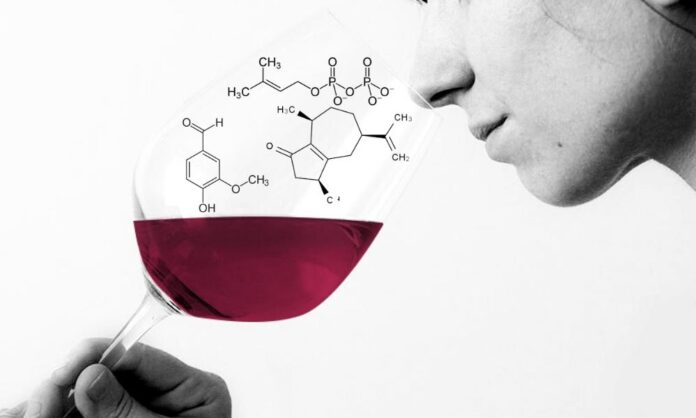
Methoxypyrazines are a class of chemical compounds that produce odors in wine. They are responsible for vegetative or herbaceous aromas that can be desirable or undesirable depending on the wine style and concentration zine.
There are four methoxypyrazines that are considered significant in wine: 3-isobutyl-2-methoxypyrazine (IBMP), 3-isopropyl-2-methoxypyrazine (IPMP), 3-sec-butyl-2-methoxypyrazine (SBMP), and 3-methyl-2-methoxypyrazine (MMP). However, IBMP and IPMP are the most abundant and best studied
IBMP is the dominant methoxypyrazine in Sauvignon blanc, Semillon and Cabernet Sauvignon wines. It has a characteristic odor of fresh vegetables, bell pepper, gooseberries, herbaceous, leafy, or vegetative. It has a very low aroma threshold, especially in white wines
IPMP is mainly found in wines that were fermented with stems, as it is present at high levels in grape stems. It has a characteristic odor of green pea, earthy, asparagus, leafy, or green beans. It has an even lower aroma threshold than IBMP, making it one of the most odor-active compounds in wine
SBMP and MMP are less common and less studied than IBMP and IPMP.
SBMP is found mainly in Cabernet Sauvignon wines and has a similar odor to IBMP but less intense. MMP is found mainly in Sauvignon blanc wines and has a similar odor to IPMP but more fruity
Methoxypyrazines are formed in grapes by a biosynthetic pathway that involves amino acids and fatty acids. They are influenced by various factors such as grape variety, climate, canopy management, ripening stage, and fungal infection. Methoxypyrazines are highly extractable in wines and are very stable during fermentation and aging
Methoxypyrazines can have a positive or negative impact on wine quality depending on the wine style and concentration. In some wines, such as Sauvignon blanc or Cabernet Sauvignon, methoxypyrazines can contribute to varietal character and complexity at moderate levels. However, in other wines, such as Chardonnay or Pinot noir, methoxypyrazines can be considered a fault and mask fruity aromas at any level.
To prevent or reduce methoxypyrazines in wine, some strategies include harvesting grapes at optimal ripeness, avoiding contact with stems or leaves during winemaking, using alternative closures such as screwcaps or synthetic corks that do not contain methoxypyrazines, and blending wines with low or high methoxypyrazine levels to achieve balance.
